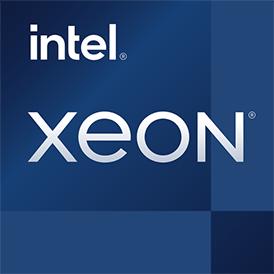 Geekbench 3, 64bit (Multi-Core)
Geekbench 3, 64bit (Multi-Core)
|
|
Intel Xeon E5-2630L v4
10C 20T @ 1.8 GHz
|
29088
|
|
|
Intel Core i7-3930K
6C 12T @ 3.2 GHz
|
20711
|
 Estimated results for PassMark CPU Mark
Estimated results for PassMark CPU Mark
|
|
Intel Xeon E5-2630L v4
10C 20T @ 1.8 GHz
|
10499
|
|
|
Intel Core i7-3930K
6C 12T @ 3.2 GHz
|
8254
|
 Geekbench 5, 64bit (Multi-Core)
Geekbench 5, 64bit (Multi-Core)
|
|
Intel Xeon E5-2630L v4
10C 20T @ 1.8 GHz
|
6122
|
|
|
Intel Core i7-3930K
6C 12T @ 3.2 GHz
|
4576
|
 Geekbench 6 (Multi-Core)
Geekbench 6 (Multi-Core)
|
|
Intel Xeon E5-2630L v4
10C 20T @ 1.8 GHz
|
5406
|
|
|
Intel Core i7-3930K
6C 12T @ 3.2 GHz
|
3201
|
 Geekbench 3, 64bit (Single-Core)
Geekbench 3, 64bit (Single-Core)
|
|
Intel Core i7-3930K
6C 12T @ 3.2 GHz
|
3542
|
|
|
Intel Xeon E5-2630L v4
10C 20T @ 1.8 GHz
|
3407
|
 Cinebench R15 (Multi-Core)
Cinebench R15 (Multi-Core)
|
|
Intel Xeon E5-2630L v4
10C 20T @ 1.8 GHz
|
1160
|
|
|
Intel Core i7-3930K
6C 12T @ 3.2 GHz
|
915
|
 Geekbench 6 (Single-Core)
Geekbench 6 (Single-Core)
|
|
Intel Xeon E5-2630L v4
10C 20T @ 1.8 GHz
|
1022
|
|
|
Intel Core i7-3930K
6C 12T @ 3.2 GHz
|
731
|
 Geekbench 5, 64bit (Single-Core)
Geekbench 5, 64bit (Single-Core)
|
|
Intel Xeon E5-2630L v4
10C 20T @ 1.8 GHz
|
832
|
|
|
Intel Core i7-3930K
6C 12T @ 3.2 GHz
|
778
|
 Cinebench R15 (Single-Core)
Cinebench R15 (Single-Core)
|
|
Intel Core i7-3930K
6C 12T @ 3.2 GHz
|
129
|
|
|
Intel Xeon E5-2630L v4
10C 20T @ 1.8 GHz
|
121
|
 Cinebench R11.5, 64bit (Multi-Core)
Cinebench R11.5, 64bit (Multi-Core)
|
|
Intel Xeon E5-2630L v4
10C 20T @ 1.8 GHz
|
14.3
|
|
|
Intel Core i7-3930K
6C 12T @ 3.2 GHz
|
10.2
|
 Cinebench R11.5, 64bit (Single-Core)
Cinebench R11.5, 64bit (Single-Core)
|
|
Intel Core i7-3930K
6C 12T @ 3.2 GHz
|
1.5
|
|
|
Intel Xeon E5-2630L v4
10C 20T @ 1.8 GHz
|
1.5
|

